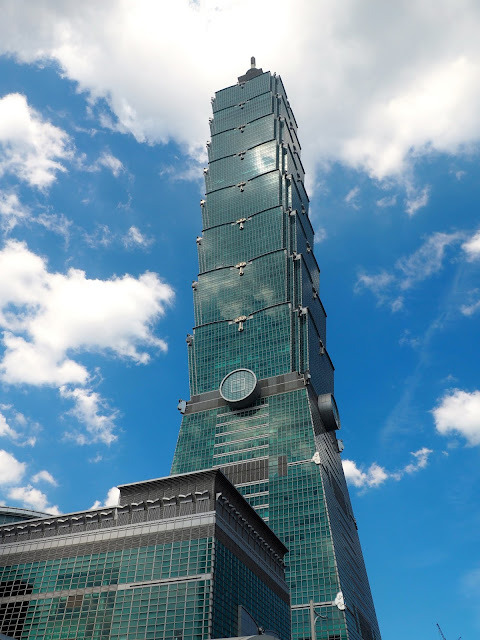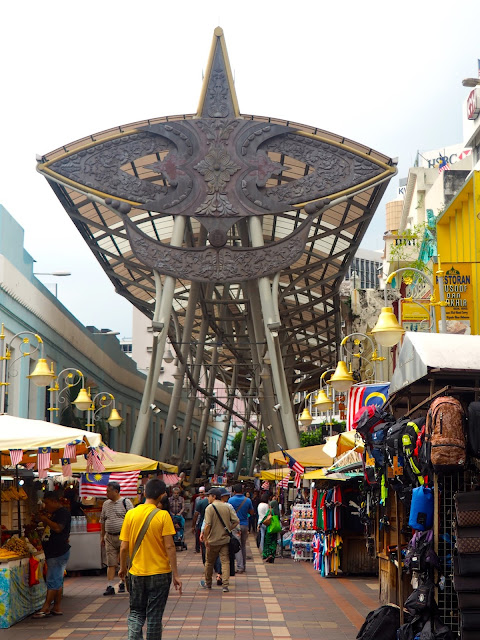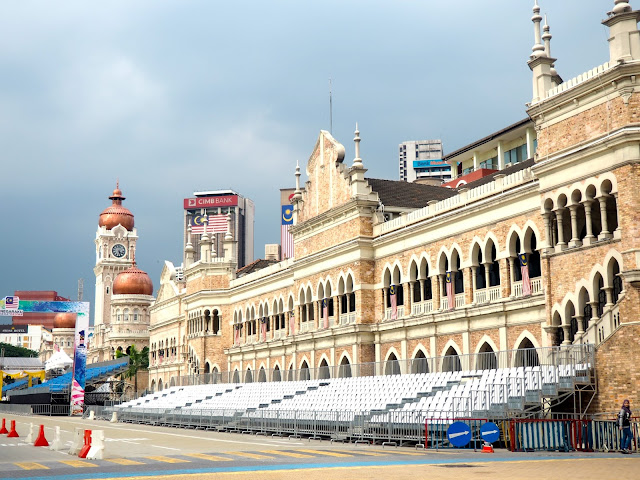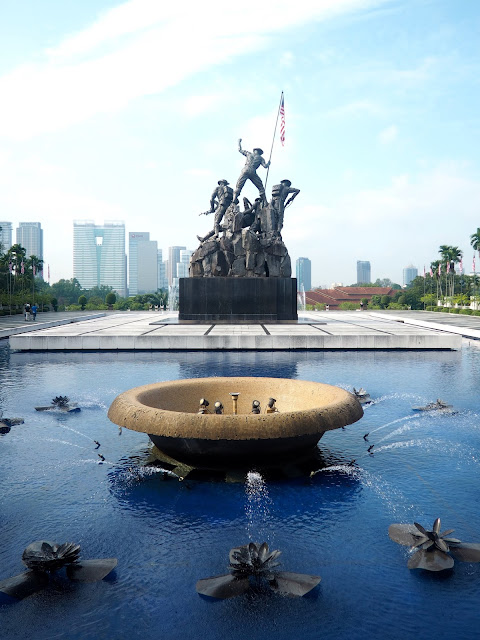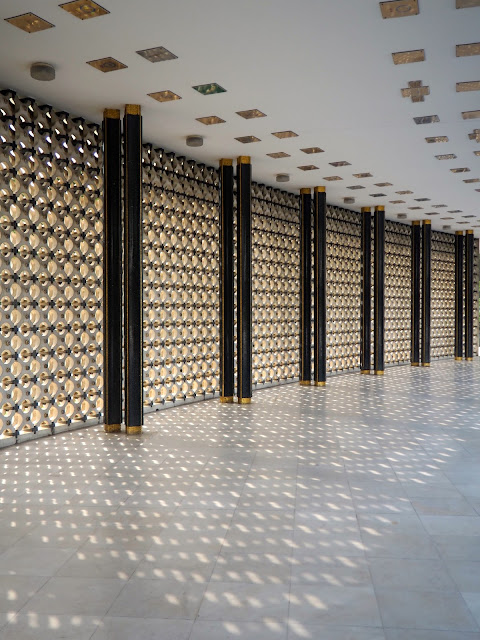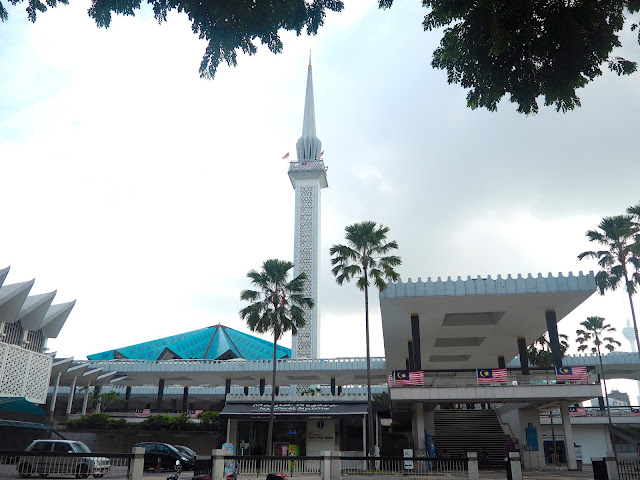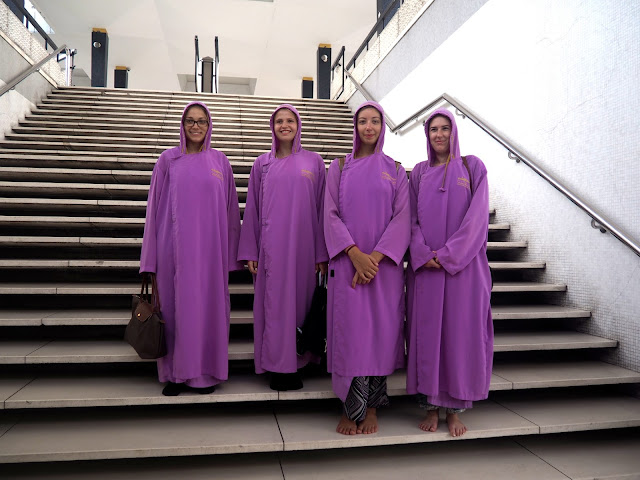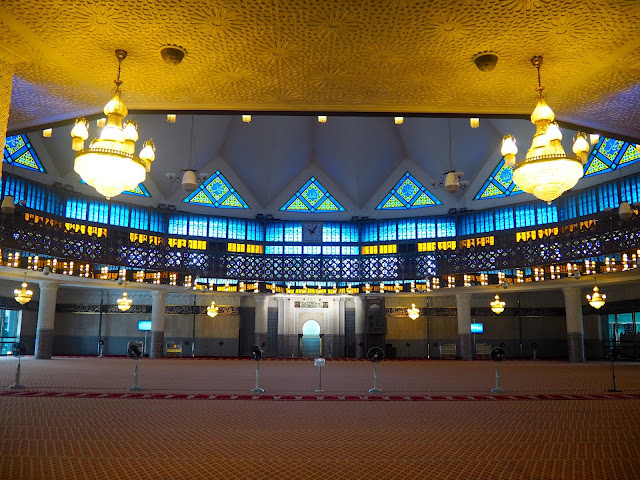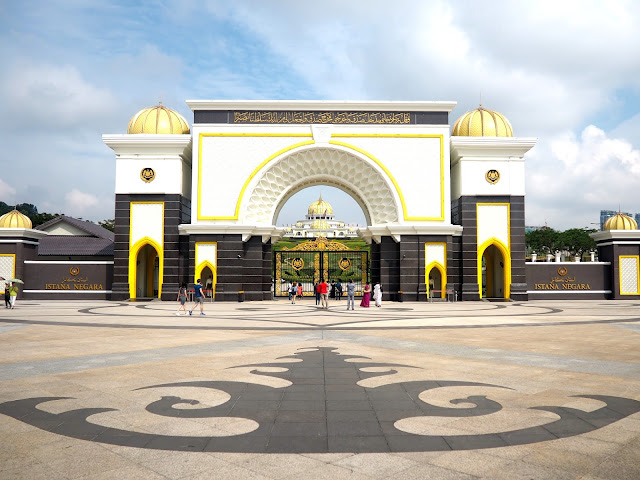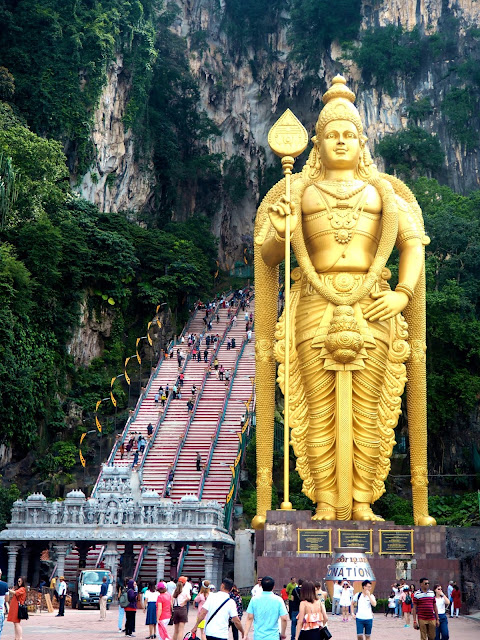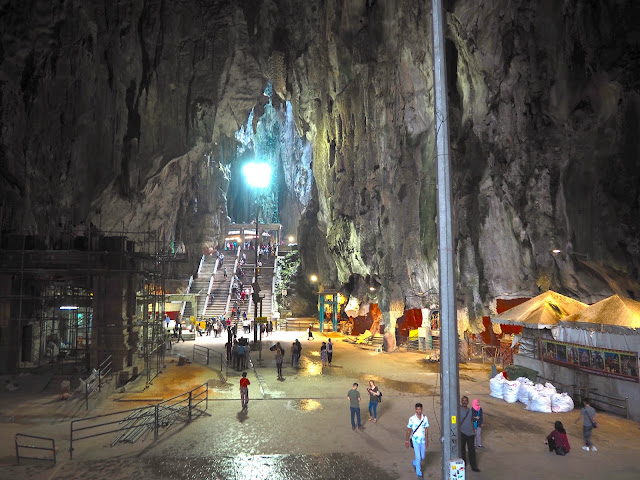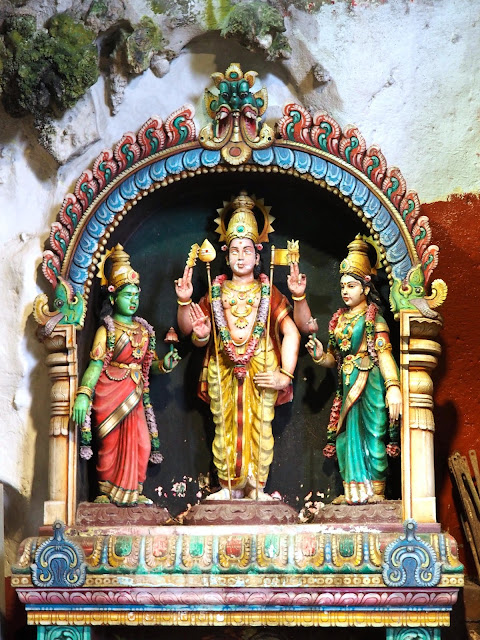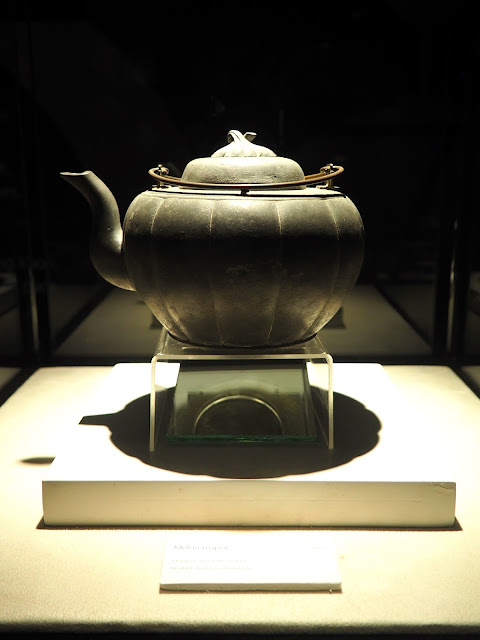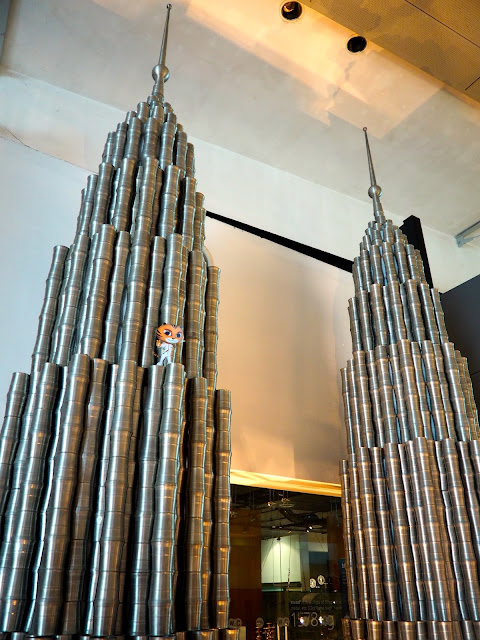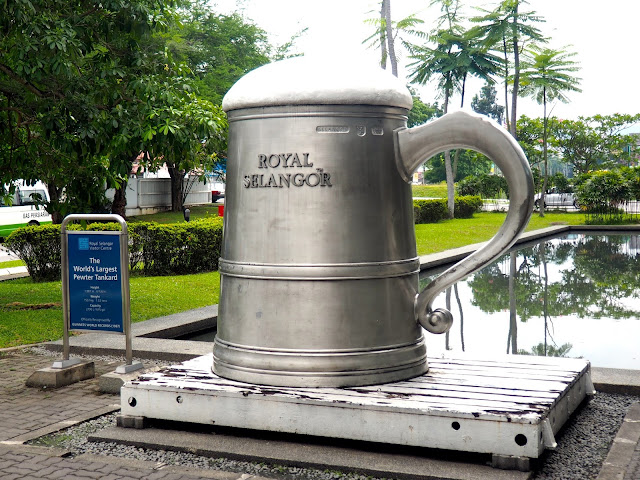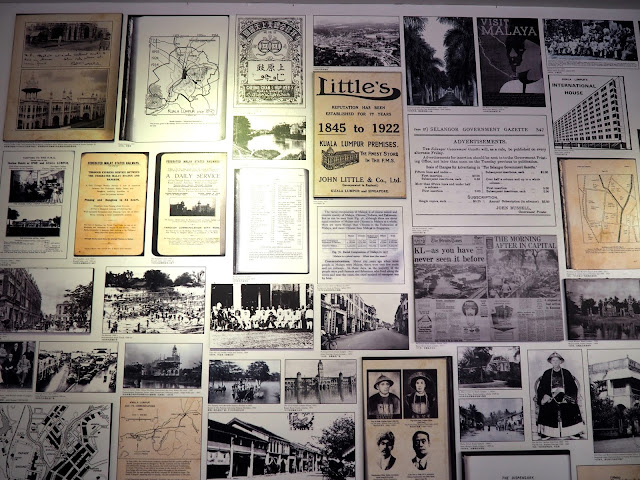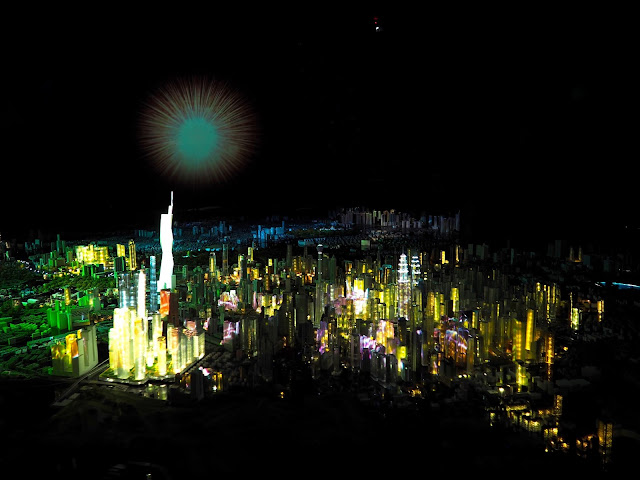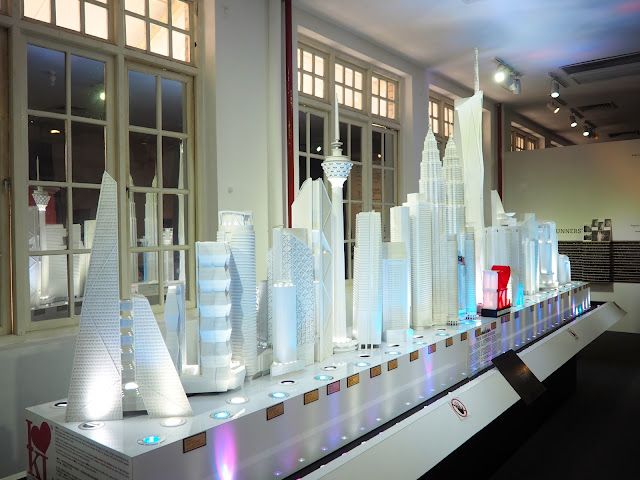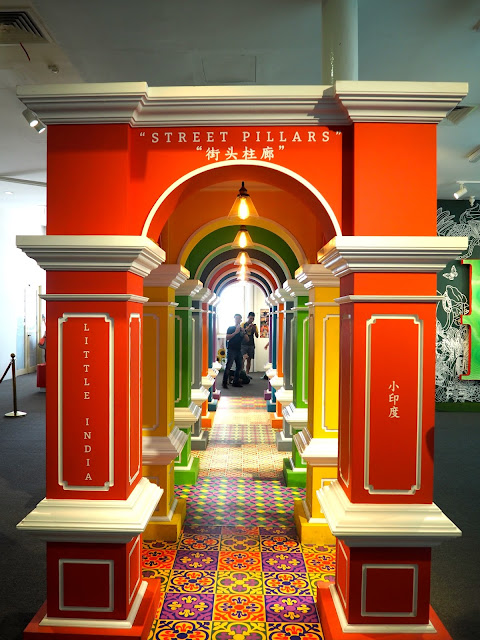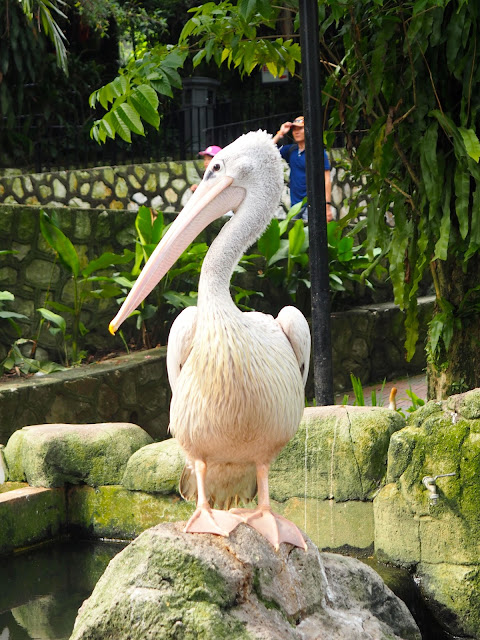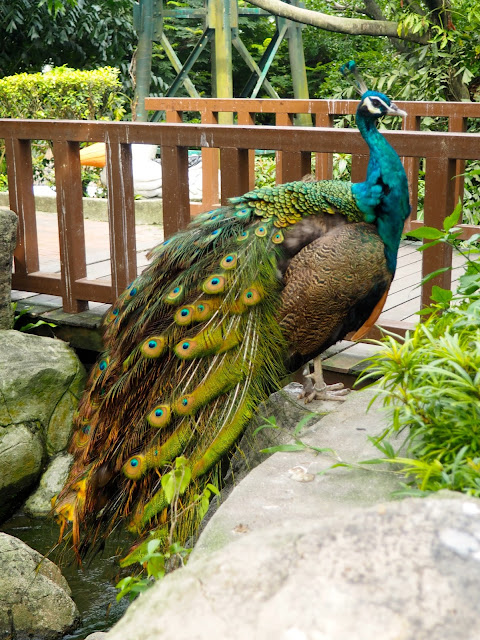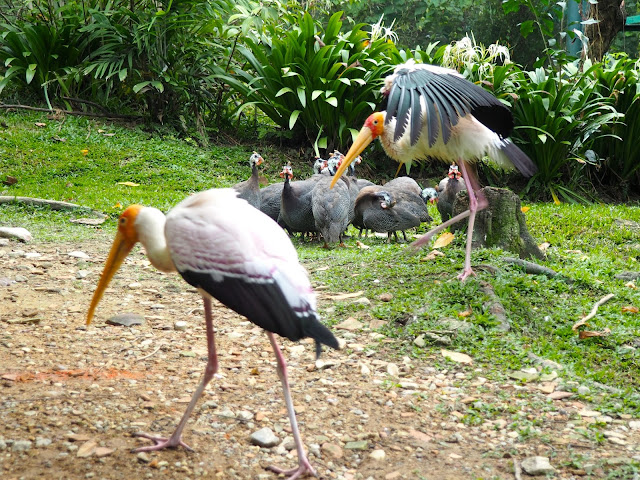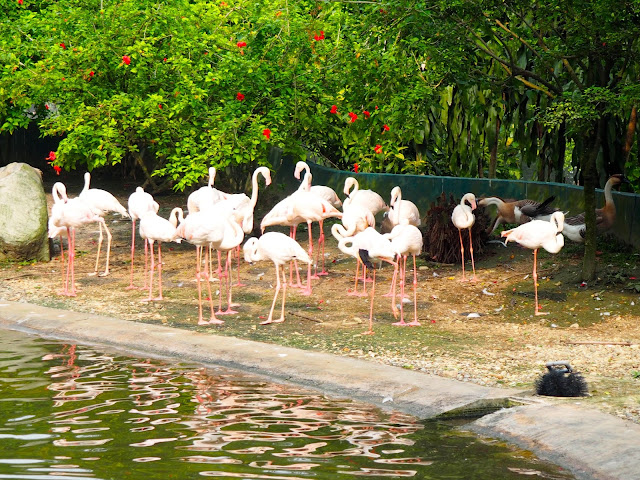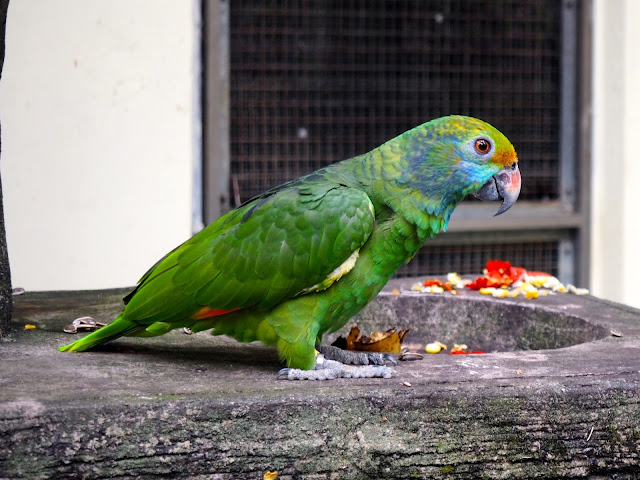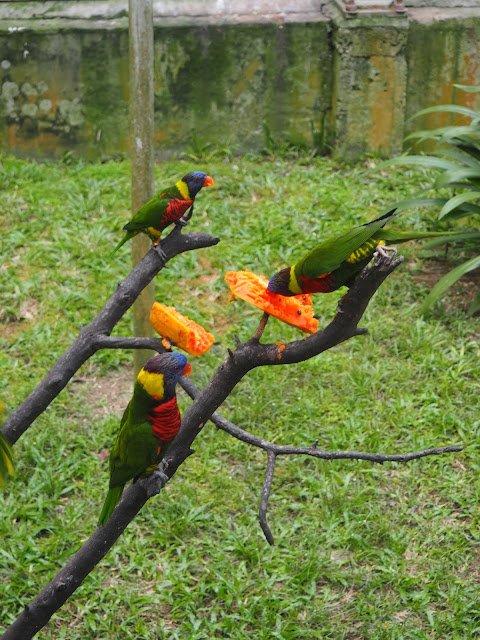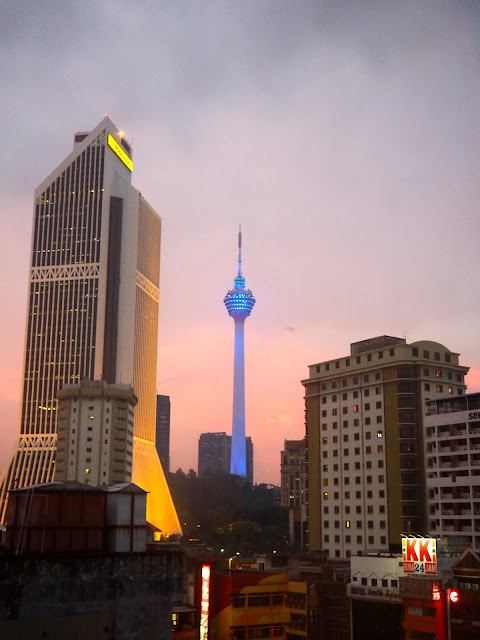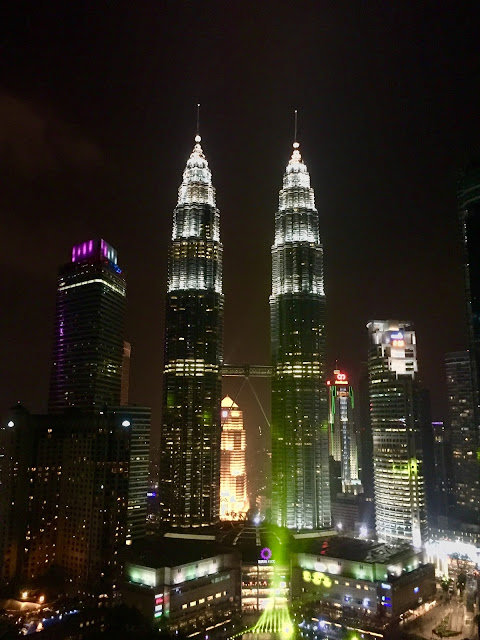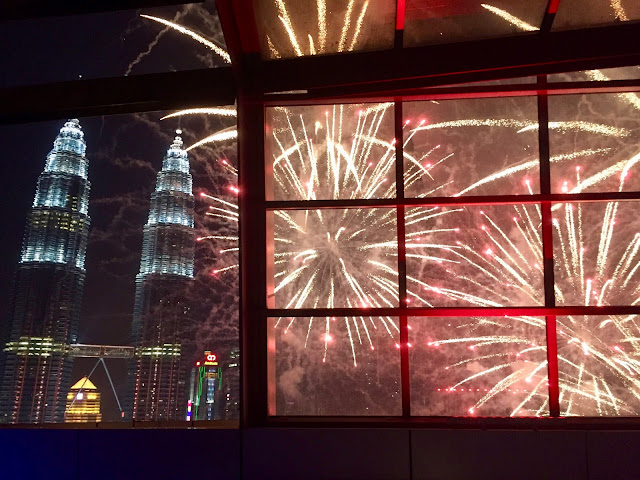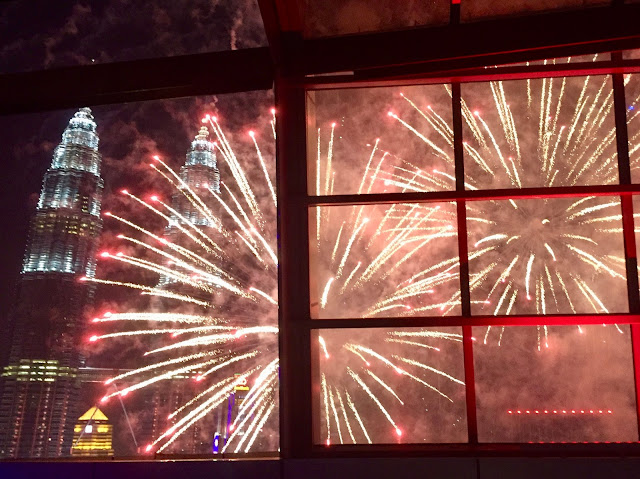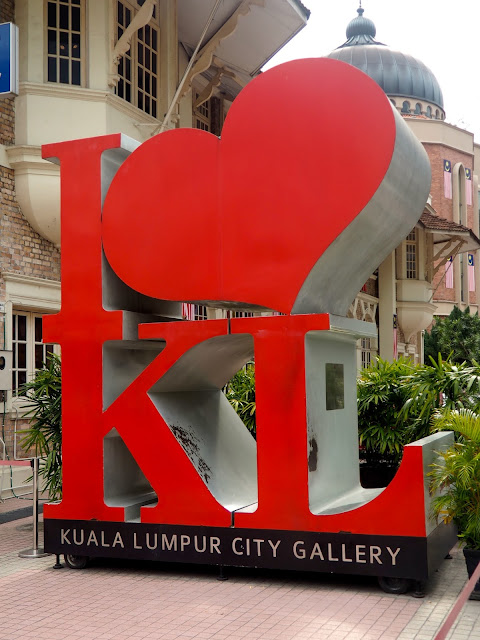
Kuala Lumpur | Malaysia Part 2
Penang and Kuala Lumpur definitely feel like very different places! Where Penang is filled with British colonial architecture, and quaint Chinese jetties and the old town, KL is a modern, multicultural metropolis, fitting for the capital of such a melting-pot country. Evidence of its history and culture is still apparent, especially for us since our hotel was in Chinatown, but it’s combined with towering skyscrapers and international brand names. By this point in the trip, we had a better idea about Malaysia’s history too, so we could better understand the enthusiasm bubbling in the city, as they were approaching their National Day, the 60th anniversary of their independence, which we would witness more of at the end of our time in KL. The SEA games had also been taking place, and were coming to a close, so the city was certainly full of activity! Our arrival came after a few hours on a bus from Penang, and a private bus transfer from the terminal to our hotel, putting us there in the middle of the afternoon.
We started off with an orientation walk, to get familiar with the city and see a few sights along the way. The hotel backed on to Petaling Street, the heart of Chinatown. I was instantly reminded of Ladies Market, back in Hong Kong, with the stalls set up down the street selling very similar wares, including bags, shoes, watches, electronic accessories, and jewellery, most of it copies of the famous brand names plastered on them all. It was narrow and densely packed too, and strung with red lanterns overhead, and we quickly learned that sometimes it would be better to go the long way around this street instead of through it! Then we passed by Central Market, with both its indoor and outdoor shopping. One stall in particular caught our eyes, selling ‘Putu Bambu’, a sweet rice dessert, whose shape is created by packing it into bamboo sticks first. We watched the vendors plate it up with incredible speed, then decided we’d get some to try for ourselves – delicious! We passed by all kinds of cultures, from Chinatown to Hindu temples, to the colonial architecture decking the streets. The Sultan Abdul Samad building was definitely one of the most impressive, with its large clock tower in the centre, and Arabic inspired dome shaped archways. Across the road was the the where the British flag once flew, and was replaced with the Malaysian one on 31st August 1957, at their independence ceremony.
We caught the train across the city after that, to view what is easily KL’s most famous sight – the Petronas Twin Towers. The train exits into the middle of the building, in the KLCC shopping centre, which was packed with expensive, recognisable brand names. Our guide quickly led us outside though, through the middle of the two towers (one was built by the Koreans, the other by the Japanese), to the square outside where we could turn around and see them standing before us. Even though the Petronas Towers are an image so many of us are already familiar with, seeing such a well-known sight in person is always impressive to me, and a little surreal! We also went out the other side of the building, where there’s a small park, with fountains in the middle, so our guide could point out the sky bar we planned to visit the next night. We headed back towards Chinatown then, stopping off at Central Market again for a bit of souvenir shopping (I got a magnet, duh!), before turning in for an early night. We were all pretty tired, and after having a poor internet connection back in Penang, I had a Game of Thrones finale to catch up on!
The next day began with a half day guided tour of the city, led by the brother of our Penang guide – of course, he asked us which tour was better and we politely said both were great! We started at the National Monument, a tribute to those who died fighting in the World Wars and the Malaysian civil war. Our guide explained the design of the coat of arms, with images representing different states, and the moon and star representing the Islamic faith of much of the country (though plenty other religions are practiced too), and pointed out some of the regiments memorialised on the ceiling of the covered pathway. We took our photos, and he pointed out some buildings visible around the city. We saw several planes and helicopters that morning too, which were practicing their flying formations ahead of the National Day celebrations the next day. Our guide also showed us the gardens, where he told us what the most important thing in life is – that’s top secret though! Next, we visited the National Mosque, the largest mosque in the city. The design from the outside was interesting, with its huge, blue, umbrella-shaped roof. We were able to look inside too, but as women, we had to wear the long, hooded robes provided, to cover all of our arms, legs, and hair. The prayer room was beautifully designed too, and a local friend of the guide explained a little more about Islam and their prayers to us. Our third destination was the National Palace, which was only a brief stop for photos, as you can’t go inside, but it’s a grand structure to look at, decked out in yellow, the colour of royalty here. Each state in Malaysia has a sultan, and every five years one is chosen to be sultan of the whole country, living in KL, then returning to his home state when his five years are up.
After experiencing an Islamic mosque already, we went to see another religious site later, the Hindu temples in the Batu Caves. Hinduism has so many gods, and I (like most others I assume) am only slightly familiar with a few of the most famous ones, so Batu was new to me. The colossal golden statue at the entrance was definitely an unforgettable sight, though we were soon distracted again by the stairs leading up the side of it, stretching as high as the statue. There are over 270 steps to climb up to reach the cave entrance, while also being careful of the monkeys scrambling about it too! There are multiple caves on the mountain, but we were advised that only the main one is worth visiting – we didn’t have time for the dark cave, and some of the others have been set up purely as tourist traps, such as a mini-zoo. Inside the cave, it was huge and spacious, with light filtering down through the skylight, as well as electric lights set up. In various corners of the cave, there were statues of different gods, created in bright colours – I would have been interested to know more about each one, but our guide wasn’t with us at this point. Up some more stairs, there’s a secondary chamber, where the main altar is situated, and people can receive blessing from the religious leaders there. This cave was also full of dozens more monkeys! We descended the stairs again – murder on my knees! – and made our way to our last location, the Royal Selangor pewter factory. We had a guided tour, seeing various pewter artefacts, watching workers crafting their items. One of the most famous stories is about the melon teapot, which was told to us by the founder’s granddaughter; a man was looking for rice and food on the railway tracks, when he found the teapot, which had been dropped and left behind by the station master. As he bent to pick it up, a bomb exploded and shrapnel flew over his head, so he kept the teapot, viewing it as lucky. Years later he gave it to his friend, he worked at the pewter factory, to have it cleaned, and the friend noticed the stamp on the base. He explained that this teapot was made by the factory’s founder (and is now the last of the teapots he made), who was also his wife’s grandfather (the same woman we were talking to), and he eventually convinced the man to sell it back to the factory, where it is now displayed.
We had the afternoon free to do as we pleased, and after a quick stop for food and coffee, we headed to the City Gallery, which houses a small exhibition about KL’s past and future. The ground floor had a display of old photos and posters from KL’s early origins through the colonial era, showing how the city began to develop. There was also an art and fashion display, as part of the impending 60th anniversary celebrations, and a model of what the area of the city we were in, near the Sultan Abdul Samad building, used to look like. Upstairs was dedicated to the future of the city; we entered a room with a vast model of KL, which had an accompanying video and light display. Different parts of the city were highlighted, showing how it was built, and then how it will continue to grow and develop in the future, as the model includes buildings that are still being constructed, including the Merdeka tower, which will be the highest in the city, and third highest in the world. The rest of this room was a series of large art pieces themed around the city, including the new skyline, the Little India street pillars, and various inversions of the skyline, creating wings or a moon. We spent a long time browsing the gift shop too, as there were special discounts for National Day, and they had lots of beautiful wood carvings, so I ended up walking away with another magnet, and a couple of bookmarks.
We left the gallery and started walking in the direction of the botanic gardens, which is near the National Monument and Mosque we were at that morning. There are several other things to see and do in this area, including the Islamic Arts Museum, and Orchid Garden, and a Butterfly Park. We were looking for the Bird Park though, advertised as the largest free-flying walk-through aviary in the world. The entrance price was a little steep, but we would have wasted too much time walking back and forth to not pay a visit, and it did seem more worth the price once we started exploring inside. It really was massive, and divided into various zones for different species. Some had to be kept inside separate enclosures, such as the hunting owls, the huge flightless ostriches and emus, and the hornbills, with their powerful beaks. Others had different habitat requirements too, like the flamingoes, ibises and pelicans that need to be near water. Many other species though, were free to walk and fly around as they liked, and guests can buy packets of food to give them, so many birds will start following you in hopes of getting some! Some species were more impressive to look at than others, of course, such as the colourful peacocks strutting around, and other brightly feathered birds, while the inclusion of chickens and geese was unexpected, but fun anyway, especially when you heard the roosters crowing. Our favourite area was the ‘World of Parrots’, as our timing was accidentally perfect; we walked inside and were immediately given handfuls of seeds by the keeper, to feed to the birds. This was a free-flying enclosure, and the parrots were so eager for the seeds that they didn’t just fly over and land near us, but actually landed on our shoulders and arms, cawing at us if we moved the seeds too far out of reach at any point. It was very exciting, and not an experience that we had been expecting, but one that we were very pleased to have anyway!
We returned to the hotel – after a long walk, since crossing some of the large junctions proved to be almost impossible! – to rest and freshen up before going out for the evening again. We took the train back to KLCC and met our guide outside the Petronas Towers, to then walk over to the Traders Hotel, which has the Sky Bar on its top floor. There’s also a pool inside the bar, so we had to be a little cautious when walking around, to avoid falling in! It definitely looked cool though, under the flashing lights, and with the floor-to-ceiling windows beside it. As it was the National Day long weekend, we had to pay an entrance fee, which you wouldn’t normally, but that did include a drink with it, and we had purposely waited to come on Wednesday night, as it’s ladies night, so we could have frozen margaritas for free for the rest of the night too. The first thing we did though, was stop to take photos of the Petronas Towers out the windows, lit up in the dark, and looking even more impressive than they did by daylight. The window tables were all marked as reserved, and we later learned it would cost us the equivalent of about £300 if we wanted one – nope! We settled at a table on the other side of the building instead, chatting and drinking and listening to the music for the evening. We were about to leave at around 11.30-11.45, when the DJ said something about fireworks, which stopped us all in our tracks – a quick enquiry told us that there would be fireworks outside the windows at midnight, when National Day began. We stood on the balcony upstairs to watch, as the windows were already crowded below us, and were rewarded with a fireworks display, basically level with the bar, with the Petronas Towers serving as the backdrop next to them. It was sheer luck that we were able to see such an event, as we hadn’t known about it in advance, and we were delighted, not only to see the fireworks, but to be so close to them – it was almost alarming at times, how close they were to the windows, and we could smell the gunpowder long after they’d finished.
We left after that, and wove our way through the streets and crowds, where many horns were blaring (think footie match) and flags were being waved, to find the train station again, which was running for longer in light of the festivities – the shopping centre was closed, so we got directions from a police officer, and then an older lady to find another way down to it! The downside to the National Day holiday was that traffic leaving KL the next day was very crowded, so it would take us longer to reach our next destination than usual. KL was a fun city though, and I was glad to experience another good mix of history and culture, through the morning tour and City Gallery visit, with more fun, laid-back elements, like the Bird Park and the Sky Bar. It reminded me of Hong Kong in some ways, with its mix of cultures, and of old and new, and the range of sights to see, a good representation of Malaysia’s multicultural heritage and history, and forward-thinking developments for the future.
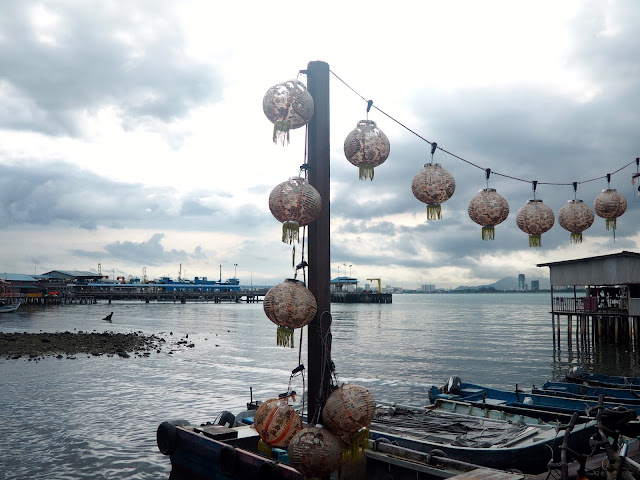
Penang | Malaysia Part 1
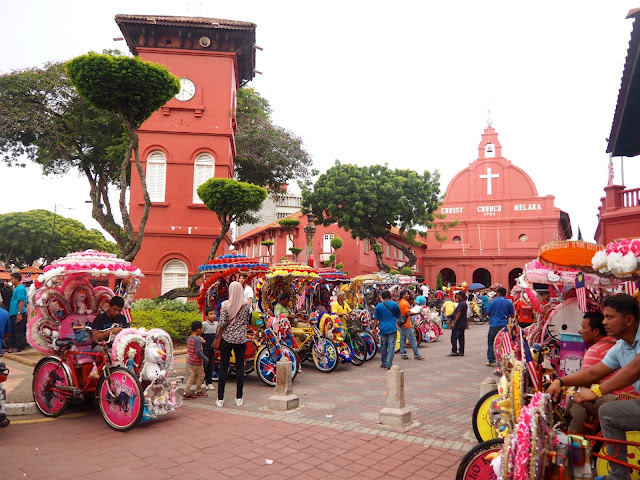
Melaka | Malaysia Part 3
You May Also Like
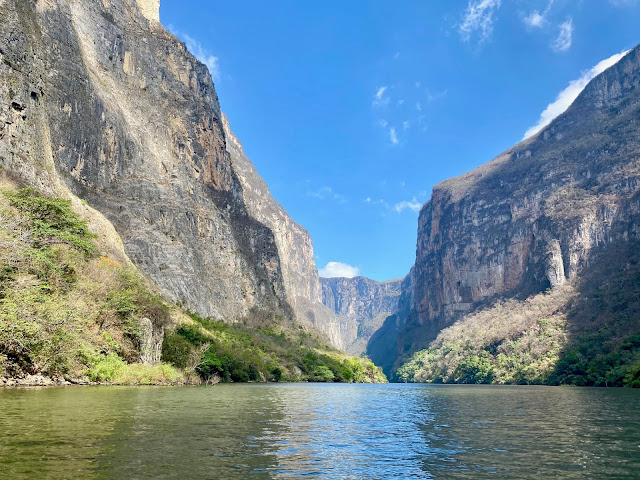
San Cristobal de las Casas | Mexico
2 April 2020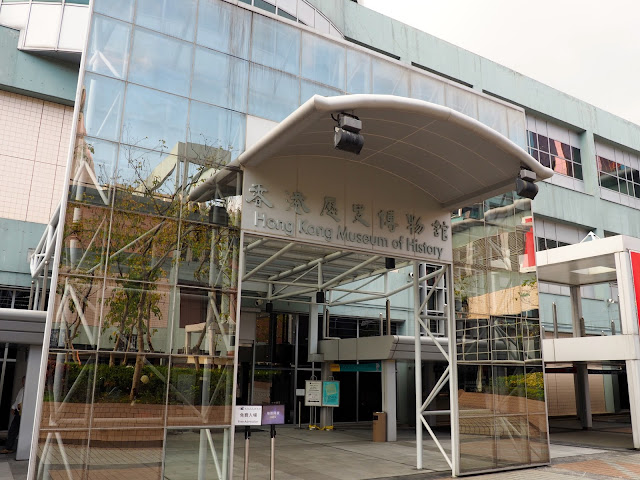
The Hong Kong Story | Museum of History
20 April 2016